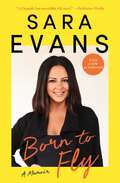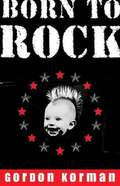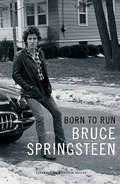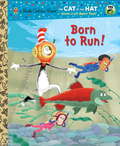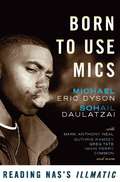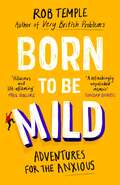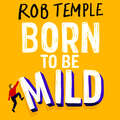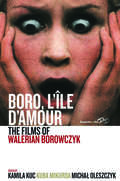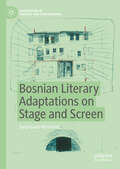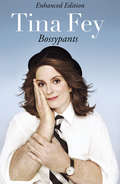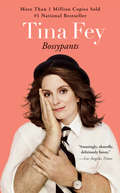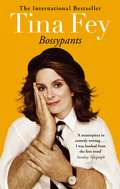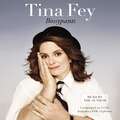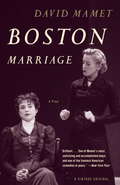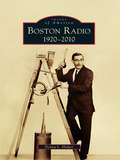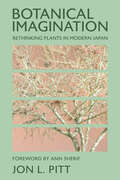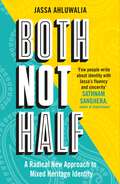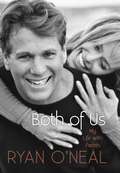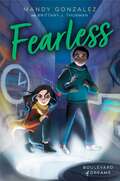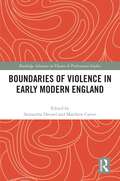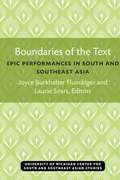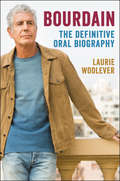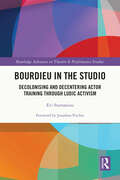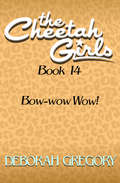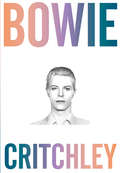- Table View
- List View
Born to Fly: A Memoir
by Sara EvansCountry music star Sara Evans&’s &“humble but incredible life story&” (Publishers Weekly) about her rise to stardom, her roundabout path to love, and how her faith brings daily joy no matter the circumstances is an inspiring and &“warm, approachable read&” (Booklist).Sara Evans—a Billboard, ACM, and CMA Award–winning country music star who&’s been named one of People&’s &“50 Most Beautiful People&” and competed on ABC&’s Dancing with the Stars—has been inspiring fans throughout her successful music career. In this powerful, personal, and often humorous book, Sara opens up and shares stories from her professional and personal life, describing what it&’s like living in the spotlight and how her faith keeps her strong. She writes about overcoming life&’s most challenging experiences, from a childhood accident that nearly took her life, to the loss she experienced when her parents divorced, and from her own painful and very public divorce, to finding incredible love when she least expected it with former pro-quarterback-turned-sportscaster Jay Barker. Now, after over a decade of marriage, Sara and Jay&’s blended family of nine is thriving, filling her life with focus and meaning. As she weaves the narrative of her life, Sara candidly reveals the things that are most important to her and her family now, her favorite tips about staying true to herself and her faith, knowing when to ask for help, abandoning perfectionism, and the importance of a strong support group of friends and family. &“She was &‘born to fly&’ and you will fly too as you read each page&” (Joe Galante, former president of RCA Records).
Born to Rock
by Gordon KormanLeo Caraway, president of the Young Republicans Club and a future Harvard student, has his entire future planned. But Leo is soon thrown for a loop when he discovers that the lead singer of punk rock's most destructive band is his biological father.
Born to Run (edición en lengua española): Memorias
by Bruce SpringsteenLas memorias de Bruce Springsteen. «Escribir sobre uno mismo es algo muy curioso. [...]. Pero en un proyecto como este el escritor hace una promesa: mostrarle su mente al lector. Y eso es lo que he intentado hacer en estas páginas.»Bruce Springsteen, extracto de Born to Run En 2009, Bruce Springsteen y la E Street Band actuaron durante el intermedio de la Super Bowl. La experiencia fue tan maravillosa que Bruce se propuso escribir sobre ello. Así comenzó esta extraordinaria autobiografía. Durante los últimos siete años, Bruce Springsteen se ha dedicado a escribir en privado la historia de su vida, dotando a estas páginas de la misma honestidad, humor y originalidad que encontramos en sus canciones. Describe sus primeros años como chaval católico en Freehold, Nueva Jersey, en un ambiente donde la poesía, el peligro y la oscuridad alimentaban su imaginación, hasta que llega el momento que él denomina «el Big Bang»: cuando vio en televisión el debut de Elvis Presley en The Ed Sullivan Show. Nos cuenta vívidamente su incansable voluntad de convertirse en músico, sus primeros tiempos como rey de las bandas de bar en Asbury Park, y el ascenso de la E Street Band. Con un candor desarmante, cuenta también por vez primera las angustias personales que inspiraron sus mejores obras, y explica porqué la canción «Born to Run» revela mucho más de lo que pensábamos. Born to Run será una revelación para cualquiera que en algún momento haya disfrutado de Bruce Springsteen, pero estas páginas son mucho más que las memorias de una legendaria estrella de rock. Es un libro para trabajadores y soñadores, padres e hijos, amantes y solitarios, artistas, friquis, o para cualquiera que alguna vez haya anhelado ser bautizado en el sagrado río del rock'n'roll. Rara vez un intérprete ha contado su propia historia con tanta amplitud y fuerza. Como muchas de sus canciones («Thunder Road», «Badlands», «Darkness on the Edge of Town», «TheRiver», «Born in the USA», «The Rising» o «The Ghost of Tom Joad», por citar solo algunas), la autobiografía de Bruce Springsteen ha sido escrita con el lirismo de un autor de canciones único y con la sabiduría de un hombre que ha reflexionado hondamente sobre sus experiencias.
Born to Run! (Little Golden Book)
by Tish RabeWhen Nick wants to go on an adventure and Sally wants to go swimming, the Cat in the Hat knows where they can do both—alongside Salmon Sam on her incredible journey up the Swirly Whirly River! Shrunk to the size of salmon and swimming in scuba gear, the Cat and kids join Sam as she swims against the current, jumps up waterfalls, and avoids being eaten by a grizzly bear in her quest to return to the pool of water where she was born to lay her eggs. This Little Golden Book is fine fishy fun for reading on a summer day, and at only $3.99—it's almost as incredible as Sam's journey!
Born to Use Mics: Reading Nas's Illmatic
by Michael Eric Dyson Sohail DaulatzaiAt the age of nineteen, Nasir "Nas” Jones began recording tracks for his debut album--and changed the music world forever. Released in 1994, Illmatic was hailed as an instant masterpiece and has proven one of the most influential albums in hip-hop history. With its close attention to beats and lyricism, and riveting first-person explorations of the isolation and desolation of urban poverty, Illmatic was pivotal in the evolution of the genre. In Born to Use Mics, Michael Eric Dyson and Sohail Daulatzai have brought together renowned writers and critics including Mark Anthony Neal, Marc Lamont Hill, Eddie S. Glaude, Jr. , and many others to confront Illmatic song by song, with each scholar assessing an individual track from the album. The result is a brilliant engagement with and commentary upon one of the most incisive sets of songs ever laid down on wax.
Born to be Mild: Adventures for the Anxious
by Rob Temple'If you're looking to ease yourself back into normality after lockdown, Born to be Mild should be top of your reading list' Mail OnlineA funny, life-affirming memoir from the creator of social media empire Very British Problems, about how to start again when everything's gone wrong.By the time Rob Temple hit his thirties, he had become so afraid of the world that he couldn't leave the house. Depressed and anxious, he found himself drifting deeper into solitude.So Rob decided to make a plan - to embark on fifty 'mild' adventures, to be a little less Pooh Bear and a little more Bear Grylls. On a gentle journey that takes him beekeeping, bowling, and to a service station just off the M25, Rob starts to settle on a better balance - and soon discovers the joys of a life well lived.In this raw and honest memoir, Rob shares his year of gentle adventure and the lessons learnt along the way. Quiet and comforting, with a generous helping of British humour, Born to be Mild is a guide to living life unencumbered by mental illness, and a reminder to slow down and embrace your mild side.
Born to be Mild: Adventures for the Anxious
by Rob Temple'Temple is a humourist in the classic British mode ... he has a genuine comic gift' Daily Mail'A refreshingly unpolished memoir' - S Magazine'If you're looking to ease yourself back into normality after lockdown, Born to be Mild should be top of your reading list' - Mail Online'A handful of years ago, I moved with my wife to a house on a quiet street in a quiet town and lay quietly in a room for a long time.I used to love an adventure, but when I hit my thirties I started to become afraid of the world, until I was too frightened to even go outside at all . . . it was just me, my phone and my social media feeds. Doesn't sound too healthy, does it? It wasn't.'Rob Temple runs the social-media empire Very British Problems from the comfort of his own sofa, but what happens when the four walls of your living room become your world?Everything goes wrong.In this hilarious and life-affirming memoir, Rob sets out to reinvent himself as an intrepid traveller, a bee-keeper and yogi, all to become a little less Bear (Pooh) and a little more Bear (Grylls). Along the way there are good days and bad days, but with each failed adventure and small triumph, Rob discovers how the mild-mannered and anxious can still enjoy their own share of (gentle) adventure from time to time.
Boro, L'Île d'Amour: The Films of Walerian Borowczyk
by Michał Oleszczyk Kamila Kuc, Kuba MikurdaThere has been a recent revival of interest in the work of Polish film director Walerian Borowczyk, a label-defying auteur and “escape artist” if there ever was one. This collection serves as an introduction and a guide to Borowczyk’s complex and ambiguous body of work, including panoramic views of the director’s output, focused studies of particular movies, and more personal, impressionistic pieces. Taken together, these contributions comprise a wide-ranging survey that is markedly experimental in character, allowing scholars to gain insight into previously unnoticed aspects of Borowczyk’s oeuvre.
Bosnian Literary Adaptations on Stage and Screen (Adaptation in Theatre and Performance)
by Sanja Garić-KomnenićBosnian Literature on Stage and Screen aims to reconcile theoretical approaches with theatrical and cinematic practices by examining two adaptations based on works by the Bosnian author Meša Selimović. The book is informed by scholarship in film and theatre adaptation theories, and is grounded in a comparative approach that focuses on the interplay of sign systems and codes unique to screen and stage. The book looks closely at two adaptations: a screen adaptation of the novel The Fortress and a stage adaptation of the novel The Island.
Bossypants
by Tina FeyOnce in a generation a woman comes along who changes everything. Tina Fey is not that woman, but she met that woman once and acted weird around her.Before 30 Rock, Mean Girls and 'Sarah Palin', Tina Fey was just a young girl with a dream: a recurring stress dream that she was being chased through a local airport by her middle-school gym teacher. She also had a dream that one day she would be a comedian on TV. She has seen both these dreams come true.At last, Tina Fey's story can be told. From her youthful days as a vicious nerd to her tour of duty on Saturday Night Live; from her passionately halfhearted pursuit of physical beauty to her life as a mother eating things off the floor; from her one-sided college romance to her nearly fatal honeymoon - from the beginning of this paragraph to this final sentence.Tina Fey reveals all, and proves what we've all suspected: you're no one until someone calls you bossy.
Bossypants
by Tina FeyBefore Liz Lemon, before "Weekend Update," before "Sarah Palin," Tina Fey was just a young girl with a dream: a recurring stress dream that she was being chased through a local airport by her middle-school gym teacher. She also had a dream that one day she would be a comedian on TV.She has seen both these dreams come true.At last, Tina Fey's story can be told. From her youthful days as a vicious nerd to her tour of duty on Saturday Night Live; from her passionately halfhearted pursuit of physical beauty to her life as a mother eating things off the floor; from her one-sided college romance to her nearly fatal honeymoon -- from the beginning of this paragraph to this final sentence.Tina Fey reveals all, and proves what we've all suspected: you're no one until someone calls you bossy.(Includes Special, Never-Before-Solicited Opinions on Breastfeeding, Princesses, Photoshop, the Electoral Process, and Italian Rum Cake!)
Bossypants
by Tina FeyOnce in a generation a woman comes along who changes everything. Tina Fey is not that woman, but she met that woman once and acted weird around her.Before 30 Rock, Mean Girls and 'Sarah Palin', Tina Fey was just a young girl with a dream: a recurring stress dream that she was being chased through a local airport by her middle-school gym teacher. She also had a dream that one day she would be a comedian on TV. She has seen both these dreams come true.At last, Tina Fey's story can be told. From her youthful days as a vicious nerd to her tour of duty on Saturday Night Live; from her passionately halfhearted pursuit of physical beauty to her life as a mother eating things off the floor; from her one-sided college romance to her nearly fatal honeymoon - from the beginning of this paragraph to this final sentence.Tina Fey reveals all, and proves what we've all suspected: you're no one until someone calls you bossy.
Bossypants
by Tina FeyOnce in a generation a woman comes along who changes everything. Tina Fey is not that woman, but she met that woman once and acted weird around her.Before 30 Rock, Mean Girls and 'Sarah Palin', Tina Fey was just a young girl with a dream: a recurring stress dream that she was being chased through a local airport by her middle-school gym teacher. She also had a dream that one day she would be a comedian on TV. She has seen both these dreams come true.At last, Tina Fey's story can be told. From her youthful days as a vicious nerd to her tour of duty on Saturday Night Live; from her passionately halfhearted pursuit of physical beauty to her life as a mother eating things off the floor; from her one-sided college romance to her nearly fatal honeymoon - from the beginning of this paragraph to this final sentence.Tina Fey reveals all, and proves what we've all suspected: you're no one until someone calls you bossy.
Boston Marriage: Boston Marriage; Faustus; Romance (Methuen Modern Plays Ser.)
by David MametOne of America's most revered and provocative dramatists, David Mamet conquers new territory with this droll comedy of errors set in a Victorian drawing room. Anna and Claire are two bantering, scheming ladies of fashion who have long lived together on the fringes of upper-class society. Anna has just become the mistress of a wealthy man, from whom she has received an enormous emerald and an income to match. Claire, meanwhile, is infatuated with a respectable young lady and wants to enlist the jealous Anna's help for an assignation. As the two women exchange barbs and take turns taunting Anna's hapless parlour maid, Claire's young inamorata suddenly appears, setting off a crisis that puts the valuable emerald at risk and threatens the women's future. "Devastatingly funny . . . exceptionally clever" - New York Times "Brilliant . . . One of Mamet's most satisfying and accomplished plays, and one of the funniest American comedies in years" - New York Post "Wickedly, wittily entertaining . . . what makes the play such brilliant fun is its marriage of glinting period artifice and contemporary frankness" - Boston Phoenix "[Mamet's characters] are at each other's throats with a wit akin to characters out of Wilde and a vengeance not unlike those from Pinter or Edward Albee" - Boston Globe Boston Marriage was first performed at the American Repertory Theatre, Cambridge, Massachusetts, in June 1999. It received its British premiere at the Donmar Warehouse, London, in March 2001.
Boston Radio: 1920–2010
by Donna L. HalperBoston's radio history begins with pioneering station 1XE/WGI, one of America's first radio stations, and includes the first station to receive a commercial license, WBZ; the first FM radio network, W1XOJ and W1XER; and one of the first news networks, the Yankee News Service. Nationally known bandleaders like Joe Rines and Jacques Renard were first heard on Boston radio, as was one of the first weathercasters, E. B. Rideout. The city has been home to a number of legendary announcers, such as Bob and Ray, Arnie Ginsburg, Dick Summer, Dale Dorman, and Charles Laquidara; talk show giants like Jerry Williams and David Brudnoy; and sports talkers like Eddie Andelman and Glenn Ordway. Many Boston radio personalities, such as Curt Gowdy, "Big Brother" Bob Emery, Don Kent, and Louise Morgan, found fame on television but first established themselves on Boston's airwaves. Since 1920, Boston radio has remained vibrant, proving that live and local stations are as important as ever.
Botanical Imagination: Rethinking Plants in Modern Japan (The Environments of East Asia)
by Jon L. PittBotanical Imagination explores the complicated legacy and enduring lure of plant life in modern Japanese literature and media. Using critical plant studies, Jon L. Pitt examines an unlikely group of writers and filmmakers in modern Japan, finding in their works a desire to "become botanical" in both content and form. For nearly one hundred years, a botanical imagination grew in response to moments of crisis in Japan's modern history.Pitt shows how artists were inspired to seek out botanical knowledge in order to construct new forms of subjectivity and attempt to resist certain forms of state violence. As he follows plants through the tangled histories of imperialism and state control, Pitt also uncovers the ways plants were used in the same violence that drove artists to turn to the botanical as a model of resistance in the first place. Botanical Imagination calls on us to rethink plants as significant but ambivalent actors and to turn to the botanical realm as a site of potentiality.
Both Not Half: A Radical New Approach to Mixed Heritage Identity
by Jassa AhluwaliaRedefine What It Means to Talk about Mixed-Raced IdentityDive into a thought-provoking journey with Both Not Half: A Radical New Approach to Mixed Heritage Identity by actor Jassa Ahluwalia.A journey to self-discovery. For over twenty-five years, Ahluwalia grappled with the label of being “half Indian, half English,” despite his fluent Punjabi and rich cultural heritage. Feeling caught between two worlds, he embarked on a transformative quest to challenge the binary narratives surrounding mixed-race identity.Working toward an inclusive future. In this powerful memoir book, Ahluwalia uncovers the historical roots of modern mixed identity, bravely deconstructing inherited binaries and challenging passive acceptance of societal norms. Through his personal experiences and insights, he advocates for a more inclusive meaning and nuanced understanding of identity.Inside this book, you’ll find:A rallying cry for living and belonging in a divided worldThought-provoking insight that invites you to reconsider the meaning of inclusivity and diversity, prompting reflection on the labels we assign and the narratives we perpetuateA space to challenge your preconceptions, broaden your understanding, and embrace the beauty of diversityIf you liked A Different Mirror, Maybe I Don't Belong Here, or Natives, you’ll love Both Not Half.
Both of Us: My Life with Farrah
by Jodee Blanco Ryan O'Neal Kent CarrollRyan O'Neal and Farrah Fawcett. He was the handsome Academy Award-nominated star of Paper Moon and the classic romance Love Story. She was the beautiful, all-American Charlie's Angel, whose poster adorned the bedroom walls of teenage boys everywhere. One of the most storied love affairs in Hollywood history, their romance has captivated fans and media alike for more than three decades. In a tragic turn, the world lost Farrah after a tragic battle with cancer in 2009, but in his intimate memoir Both of Us, Ryan brings their relationship to vivid life. Fans of each other from afar, Ryan and Farrah met through her husband, Lee Majors, and fell passionately in love. Soon, however, reality threatened their happiness and they struggled with some serious matters, including the disintegration of Farrah's marriage; Ryan's troubled relationship with his daughter, Tatum, and son, Griffin; mismatched career trajectories; and raising their young son, Redmond--all leading Ryan and Farrah to an inevitable split in 1997. Ryan fought to create a life on his own but never stopped longing for Farrah. Eventually he realized that he had lost his true soul mate. Older and wiser, he and Farrah found their way back to each other and were excited to start a new life together. But their bliss was cut short when Farrah was diagnosed with cancer and passed away just three years later. Ryan's deep love for Farrah and his devotion to preserving her memory are evident in Both of Us. Drawing on decades' worth of personal records and keepsakes, he has included never-before-seen photographs, letters exchanged between him and Farrah, and his own diaries, making this a poignant and compelling memento for her fans. Written with candor and emotional honesty, it is a true Hollywood love story.
Boulevard of Dreams (Fearless Series #2)
by Mandy GonzalezBetter Nate than Ever meets Love Sugar Magic in this spooky second novel in the Fearless middle grade series from Hamilton and Broadway star Mandy Gonzalez about a group of young thespians who time travel back to 1950s Broadway.Twelve-year-old Relly can&’t wait for his beloved grandfather to finally see him on stage! Along with the rest of the Fearless Squad, Relly has just opened Our Time, a brand-new musical at the infamous Ethel Merman Theater. Though his grandfather would prefer his grandson pursue something more &“practical,&” Relly just knows when he sees the show, he will change his mind and come around on Relly&’s love of theater and dance. But right before their night show, a member of the Squad loses their phone down an open manhole. When the entire Squad goes down to help retrieve it, they find themselves in 1950s Manhattan. A big problem, considering the curtain goes up in about two hours—and over sixty years in the future! With a series of clues, Relly discovers that his grandfather was a popular tap dancer, working the nightclub circuit and pursuing his dream of performing—something he&’s been discouraging Relly from doing lately. Perhaps this accidental fall into a different time wasn&’t so accidental after all. Can Relly help his grandfather and make it back in time for places in the show?
Boundaries of Violence in Early Modern England (Routledge Advances in Theatre & Performance Studies)
by Matthew Carter Samantha DresselThis book explores the possibilities and limitations of violence on the Early Modern stage and in the Early Modern world. This collection is divided into three sections: History-cal Violence, (Un)Comic Violence, and Revenge Violence. This division allows scholars to easily find intertextual materials; comic violence may function similarly across multiple comedies but is vastly different from most tragic violence. While the source texts move beyond Shakespeare, this book follows the classic division of Shakespeare’s plays into history, comedy, and tragedy. Each section of the book contains one chapter engaging with modern dramatic practice along with several that take textual or historical approaches. This wide-ranging approach means that the book will be appropriate both for specialists in Early Modern violence who are looking across multiple perspectives, and for students or scholars researching texts or approaches.
Boundaries of the Text: Epic Performances in South and Southeast Asia (Michigan Papers On South And Southeast Asia #35)
by Joyce Burkhalter Flueckiger Laurie J. SearsWhen the Mahabharata and Ramayana are performed in South and Southeast Asia, audiences may witness a variety of styles. A single performer may deliver a two-hour recitation, women may meet in informal singing groups, shaddow puppets may host an all-night play, or professional theaters may put on productions lasting thirty nights. Performances often celebrate ritual passages: births, deaths, marriages, and religious observances. The stories live and are transmitted through performance; their characters are well known and well loved. Yet written versions of the Mahabharata and Ramayana have existed in both South and Southeast Asia for hundreds of years. Rarely have these texts been intended for private reading. What is the relationship between written text and oral performance? What do performers and audiences mean when they identify something as “Ramayana” or “Mahabharata”? How do they conceive of texts? What are the boundaries of the texts? By analyzing specific performance traditions, Boundaries of the Text addresses questions of what happens to written texts when they are preformed and how performance traditions are affected when they interact with written texts. The dynamics of this interaction are of particular interest in South and Southeast Asia where oral performance and written traditions share a long, interwoven history. The contributors to Boundaries of the Text show the difficulty of maintaining sharp distinctions between oral and written patterns, as the traditions they consider defy a unidirectional movement from oral to written. The boundaries of epic traditions are in a state of flux, contracting or expanding as South and Southeast Asian societies respond to increasing access to modern education, print technology, and electronic media.
Bourdain: The Definitive Oral Biography
by Laurie WooleverAn unprecedented behind-the-scenes view into the life of Anthony Bourdain from the people who knew him best When Anthony Bourdain died in June 2018, fans around the globe came together to celebrate the life of an inimitable man who had dedicated his life to traveling nearly everywhere (and eating nearly everything), shedding light on the lives and stories of others. His impact was outsized and his legacy has only grown since his death. <p><p> Now, for the first time, we have been granted a look into Bourdain’s life through the stories and recollections of his closest friends and colleagues. Laurie Woolever, Bourdain’s longtime assistant and confidante, interviewed nearly a hundred of the people who shared Tony’s orbit—from members of his kitchen crews to his writing, publishing, and television partners, to his daughter and his closest friends—in order to piece together a remarkably full, vivid, and nuanced vision of Tony’s life and work. From his childhood and teenage days, to his early years in New York, through the genesis of his game-changing memoir Kitchen Confidential to his emergence as a writing and television personality, and in the words of friends and colleagues including Eric Ripert, José Andrés, Nigella Lawson, and W. Kamau Bell, as well as family members including his brother and his late mother, we see the many sides of Tony—his motivations, his ambivalence, his vulnerability, his blind spots, and his brilliance. <p><p> Unparalleled in scope and deeply intimate in its execution, with a treasure trove of photos from Tony's life, Bourdain: The Definitive Oral Biography is a testament to the life of a remarkable man in the words of the people who shared his world.
Bourdieu in the Studio: Decolonising and Decentering Actor Training Through Ludic Activism (Routledge Advances in Theatre & Performance Studies)
by Evi StamatiouThis book offers tools to address the growing and urgent interest in exposing and challenging unconscious biases in the studio, exploiting how actor training uniquely combines elements of education and culture. It is the first practical and rigorous investigation of Pierre Bourdieu’s idea that domination and inequality are embodied in surreptitious ways. This book adapts and develops the techniques of Joan Littlewood and Ariane Mnouchkine that juxtapose the social with the comedic to theatricalise Bourdieusian concepts, inviting critical consciousness and critical praxis in the studio. It constructs the creative intervention Ludic Activism that can be practically applied in an actor training context. Actors from diverse training backgrounds were trained to use Ludic Activism, co-investigating how the Bourdieu-inspired vocabulary and pedagogy can facilitate the acknowledgement and tackling of dispositions during theatre-making. Ludic Activism developed the participants’ social representations into progressive and compassionate versions, reinforcing an understanding and use of their positionality in performance through a set of authorial acting tasks. This book is an advanced study for actors, directors, and teachers of acting for both the training/rehearsal studio and research. The methodology, account of the process, and evaluation of the creative intervention – including illustrations and selected videos that can be accessed on the Routledge website, under the Support Material section, here: https://www.routledge.com/Bourdieu-in-the-Studio-Decolonising-and-Decentering-Actor-Training-Through/Stamatiou/p/book/9781032306070 – demonstrate a decolonising and decentering trajectory for actor training.
Bow-wow Wow!: Bow-wow Wow! (The Cheetah Girls #14)
by Deborah GregoryIt&’s only been four weeks since Chanel&’s ballet accident put her on crutches, but for a Cheetah Girl, a month without dancing feels like an eternity. When she finally ditches the cast, she has trouble getting up to speed. The Cheetahs are further than ever from landing a record deal, but Chanel&’s friends don&’t seem to care about anything besides their new puppies. Worst of all, Chanel gained some weight while she was off her feet, and she feels like she doesn&’t fit in with the other Cheetahs.As the group gets ready to get back in the studio, Chanel goes on an all-carrot diet in hopes of shedding those pesky pounds. But when dizzy spells start striking her on the street, Chanel begins to wonder if carrots are enough to sustain a hungry Cheetah.
Bowie
by Simon CritchleySimon Critchley first encountered David Bowie in the early seventies, when the singer appeared on Britain's most-watched music show, Top of the Pops. His performance of "Starman" mesmerized Critchley: it was "so sexual, so knowing, so strange." Two days later Critchley's mum bought a copy of the single; she liked both the song and the performer's bright orange hair (she had previously been a hairdresser). The seed of a lifelong love affair was thus planted in the mind of her son, aged 12.In this concise and engaging excursion through the songs of one of the world's greatest pop stars, Critchley, whose writings on philosophy have garnered widespread praise, melds personal narratives of how Bowie lit up his dull life in southern England's suburbs with philosophical forays into the way concepts of authenticity and identity are turned inside out in Bowie's work. The result is nearly as provocative and mind-expanding as the artist it portrays.
